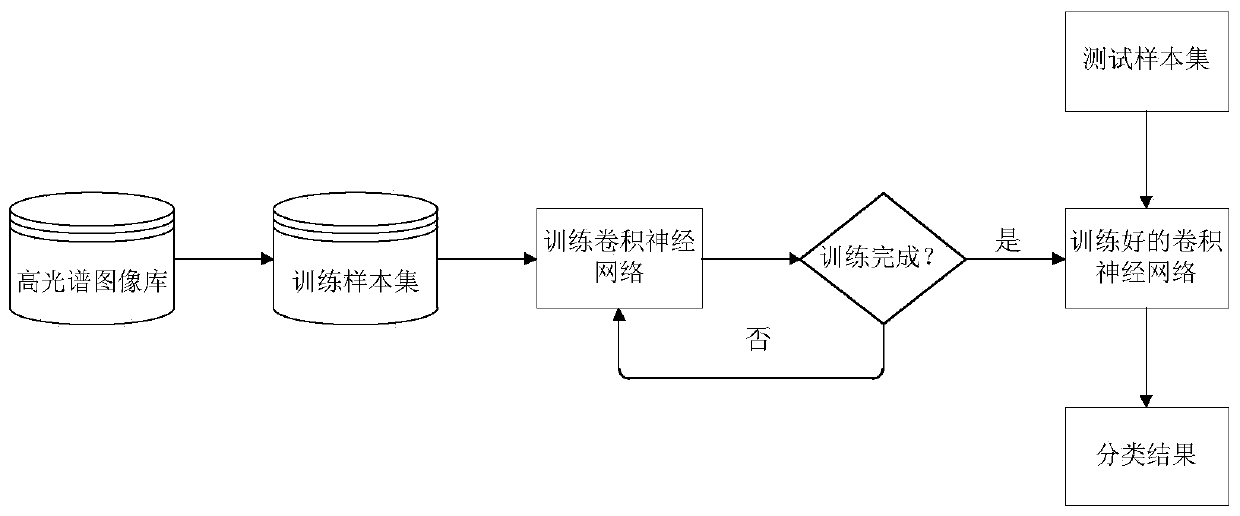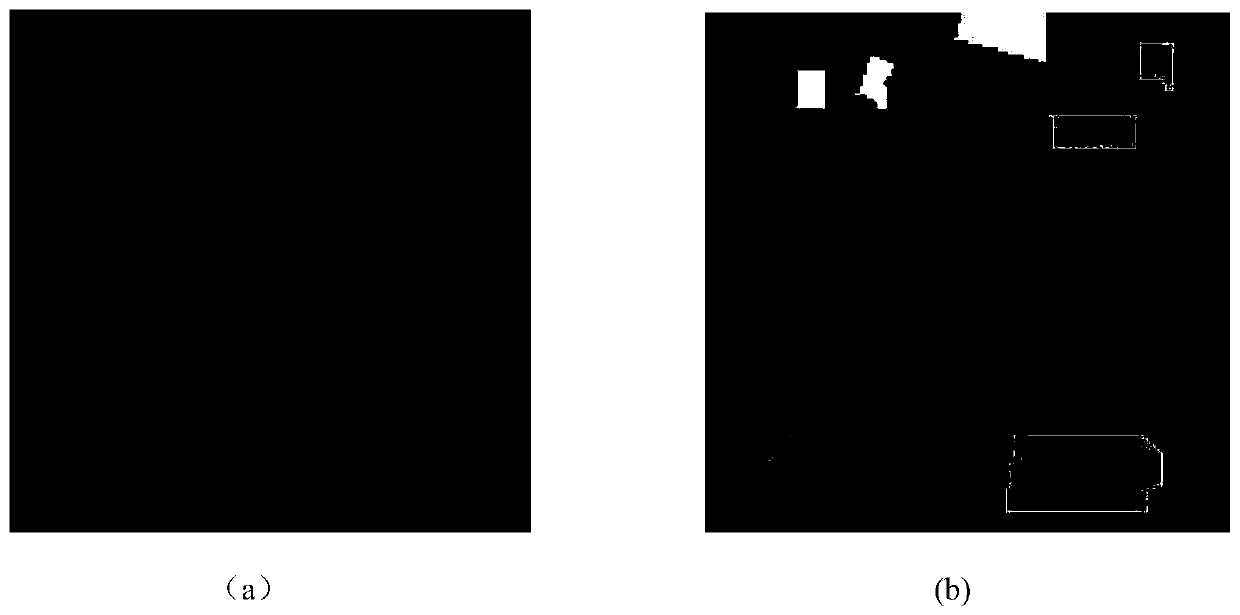Spatial spectrum attention hyperspectral image classification method based on Octave convolution
A technology of hyperspectral image and classification method, which is applied in the field of spatial spectral attention hyperspectral image classification based on Octave convolution, can solve the problems of disappearing network training gradient, poor robustness, and large distance between the same categories, and achieves hyperspectral image classification. The information contained in the features is comprehensive and detailed, the classification accuracy is improved, and the feature representation is enhanced.
- Summary
- Abstract
- Description
- Claims
- Application Information
AI Technical Summary
Problems solved by technology
Method used
Image
Examples
Embodiment 1
[0028] In recent decades, high spectral resolution has provided useful information for distinguishing different materials and objects. Hyperspectral image classification methods have been widely used in Earth observation, especially in urban development, precision agriculture, land change detection, and resources. Management and other aspects are of great significance. Among the existing methods of hyperspectral image classification, see figure 1 After constructing the hyperspectral image library, dividing the training sample set and the test sample set, building and training the convolutional neural network model, and testing the trained convolutional neural network model, the classification of the hyperspectral image is completed, but due to the hyperspectral image The complexity of the image leads to inaccurate positioning of classification information, and the trained network is easy to fall into the problem of local optimization; at the same time, due to the deep network d...
Embodiment 2
[0045] The hyperspectral image classification method based on the space spectrum attention mechanism deep learning of Octave convolution is the same as in embodiment 1. The Octave convolutional neural network described in step (3) of the present invention is constructed, see figure 2 , The present invention composes the Octave convolution module, spatial attention module, spectral attention module, pixel-level attention module and fully connected layer of the Octave convolutional neural network. The parameters of each component module are set as follows:
[0046] The Octave convolution module is the input module, which consists of four convolution parts connected in sequence, and each convolution part includes Octave convolution, see Figure 4 , Batch Normalization and Relu activation functions, there is also a maximum pooling layer between the second and third convolutional parts.
[0047] The Octave convolution operation mainly divides the hyperspectral image into two parts: the h...
Embodiment 3
[0054] The hyperspectral image classification method based on the space spectrum attention mechanism of Octave convolution is the same as that in Example 1-2, and the loss function loss of Octave convolutional neural network is determined in step 4 op , Specifically including the following steps:
[0055] (4a) The training image library (T 1 ,T 2 ,...,T j ,...,T M } Input to the Octave convolution module of the Octave convolutional neural network, and output the last layer feature F of the convolution layer.
[0056] (4b) Input the last layer of feature F to the spatial attention module and spectral attention module of the Octave convolutional neural network, and the output features are A and B respectively, and then input the output features A and B to the pixel-level attention module , The output characteristics are C and D respectively.
[0057] (4c) Input the obtained features C and D into the fully connected layer of the Octave convolutional neural network, and output the output...
PUM
 Login to View More
Login to View More Abstract
Description
Claims
Application Information
 Login to View More
Login to View More - R&D
- Intellectual Property
- Life Sciences
- Materials
- Tech Scout
- Unparalleled Data Quality
- Higher Quality Content
- 60% Fewer Hallucinations
Browse by: Latest US Patents, China's latest patents, Technical Efficacy Thesaurus, Application Domain, Technology Topic, Popular Technical Reports.
© 2025 PatSnap. All rights reserved.Legal|Privacy policy|Modern Slavery Act Transparency Statement|Sitemap|About US| Contact US: help@patsnap.com



